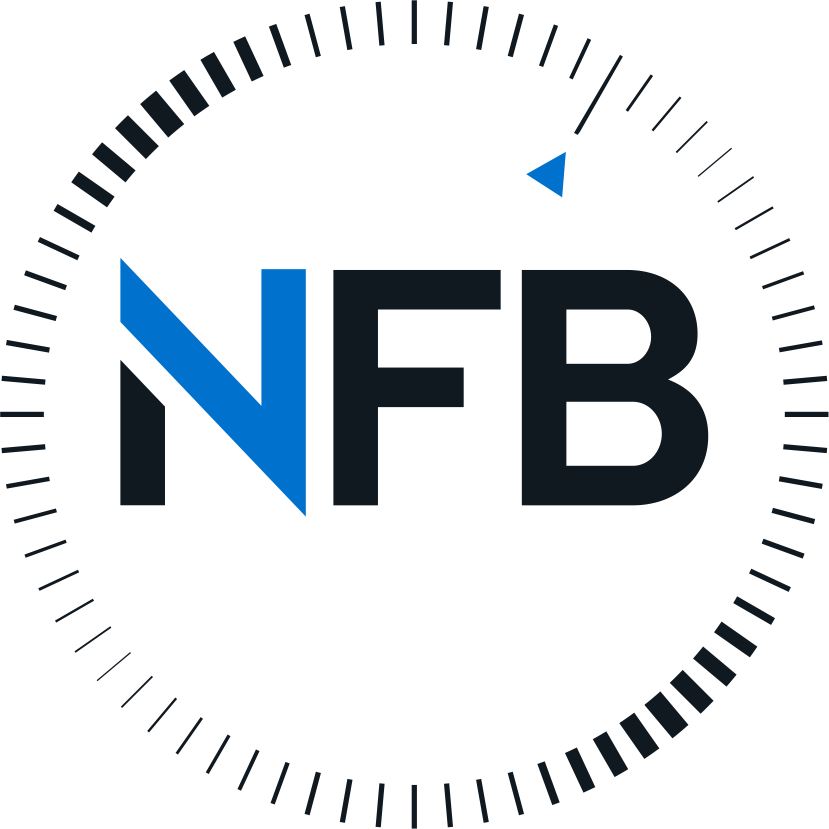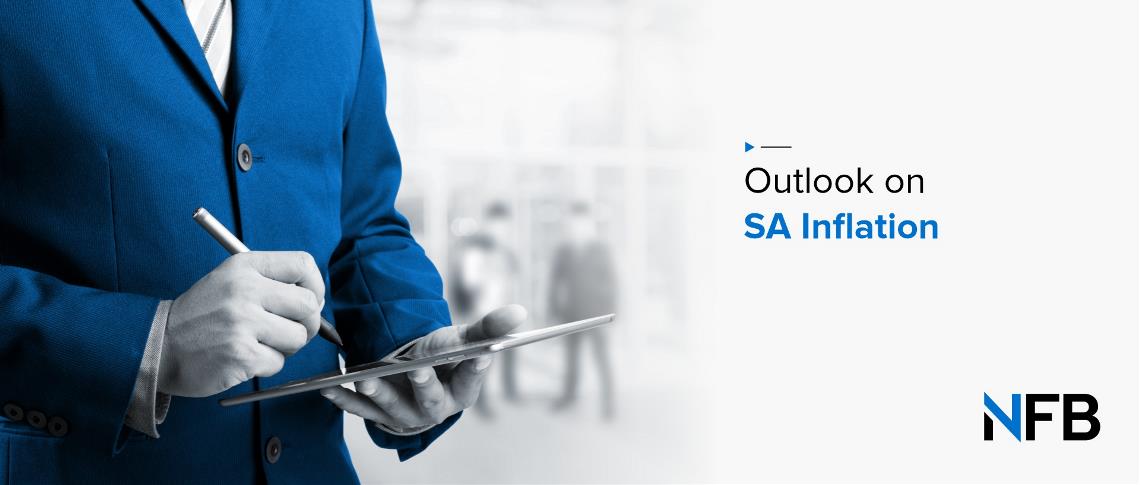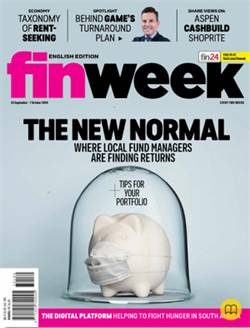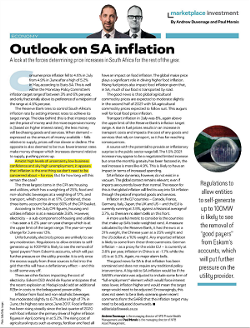Outlook on SA Inflation
A look at the forces determining the price increases for the rest of the year


Consumer price inflation fell to 4.6% in July from 4.9% in June after a high of 5.2% in May, according to Statistics South Africa. This is well within the South African Reserve Bank’s (SARB) inflation target range of between 3% and 6% per annum, and only fractionally above the its preference for a midpoint of the range at 4.5% per annum.
The SARB tries to control South Africa’s inflation rate by setting rates to achieve its target range. The idea behind this is that interest rates are the price of money and the more expensive money is (based on higher interest rates) the less money will be chasing goods and services. When demand – expressed as the amount of money available – falls relative to supply, prices will fall. The opposite is also deemed to be true: lower interest rates makes money cheaper which increases demand relative to supply, pushing prices up.
Amidst high levels of uncertainty, low business confidence and sky high unemployment it appears that inflation is the one thing we don’t need to be concerned about … for now. But for how long will this remain the case?
In South Africa inflation is measured using the Consumer Price Index (CPI) which calculates the total costs of a predetermined basket of goods and services used by the average citizen. Inflation is calculated by measuring the price in this basket over a 12 month period.
The three largest items in the CPI are housing and utilities which get a weighting of 25%; food and non-alcoholic beverages which get a weighting of 17%; and transport, which comes in at 17%. Combined, these three items account for 60% of the CPI basket.
According to the July CPI figures, housing and utilities inflation is at a reasonable 3.8%. However, electricity – a sub-component of housing and utilities – has seen a 6.2% year-on-year change which is at the upper limit of the target range. The year-on-year change for June was 13%.
Unfortunately electricity prices are unlikely to see any moderation. Regulations to allow entities to self-generate up to 100MW is likely to see the removal of ‘good payers’ from Eskom’s accounts which will put further pressure on the utility provider. It is only once the excess supply from these sources is fed into the grid that this will have a deflationary effect - and this is still some way off.
There are other factors impacting the cost of electricity. Eskom CEO Andre de Ruyter anticipates that the recent explosion at Medupi could add an additional R2 billion in costs to the beleaguered power utility. And let’s not forget the growing pushback against coal-generated power by evolving climate change perspectives which is forcing Eskom into earlier stage sustainable power sources than they might otherwise have decided.
Food and non-alcoholic beverages inflation has moderated slightly to 6.7% after a high of 7% in June, the highest rate since June 2017. Food inflation has been rising steadily since the last quarter of 2020 with food inflation the primary driver of higher inflation figures in April, coming in at 5.2%. The rising cost of agricultural inputs such as energy, fertiliser and feed all have an impact on food inflation. The global maize price, in particular, plays a significant role in driving higher food inflation. Rising fuel prices also impact food inflation given that, in South Africa, much of our food is transported by road.
The good news is that global agricultural commodity prices are expected to moderate slightly in the second half of 2021 with South African agricultural commodity prices expected to follow suit. This augers well for local food price inflation.
Transport inflation in July was 8%, again above the upper limit of the Reserve Bank’s inflation target range. A rise in fuel prices results in an increase in transport costs and impacts the cost of any goods and services that rely on transport so it has far reaching impacts. Both food and transport are commodities led inflationary items.
A source with the potential to provide an inflationary surprise is the public sector wage bill. The 1.5% 2021 increase may appear to be a negotiated limited increase but once the monthly gratuity has been factored in, the real increase is more like 4.9%. This is likely to have an impact in terms of increased spending.
South African inflation dynamics, however, do not exist in a vacuum. The global context remains relevant, even if imports are currently lower than normal. The reason for this is that global inflation will find its way into South African inflation through the price of imported goods and services.
Inflation in G7 countries – Canada, France, Germany, Italy, Japan, the UK, USA and the European Union - is currently running at 3.9%, against a historical average of 3.7%, so there are no alarm bells on this front.
A more useful metric to consider is to consider the countries that make up South Africa’s trade weighted rand. A measure calculated by the SARB, it has the euro at a 31% weight, the Chinese yuan at a 25% weight and the US dollar at a 10% weight. Any imported inflation is likely to come from these three currencies. German inflation – as a proxy for the wider EU – is currently at 3.8% per annum, inflation in China is currently -1.7% while the US is at 5.3%. Again, no major alarm bells.
The good news for South Africa is that inflation has been contained and does not require any traditional policy interventions. A big risk to South African inflation would be if the SARB’s mandate was adjusted to include some form of ‘full employment’ element which would force interest rates lower, inflation higher and would mean the target range would need to be adjusted. Encouragingly, this does not seem to be a likely scenario given recent comments from the SARB that the inflation target may need to be adjusted downwards.
|
This article, "Outlook on SA Inflation" was written exclusively for Finweek Magazine. It was published in the 24 September 2021 edition. You can access the original print coverage in English here, and in Afrikaans here |
||
 |
 |
|













